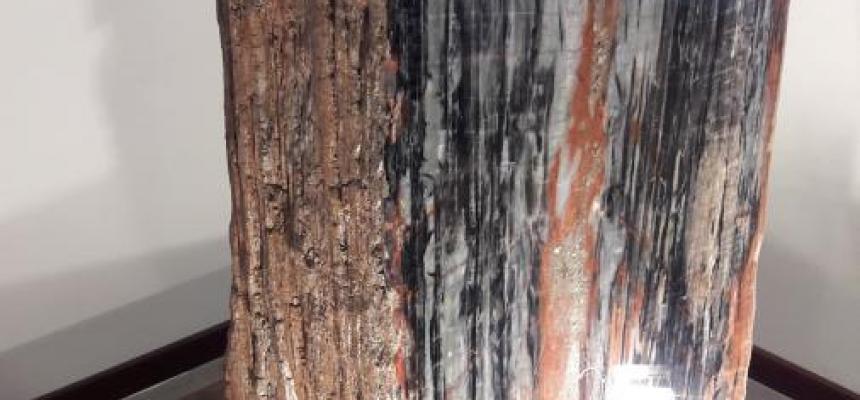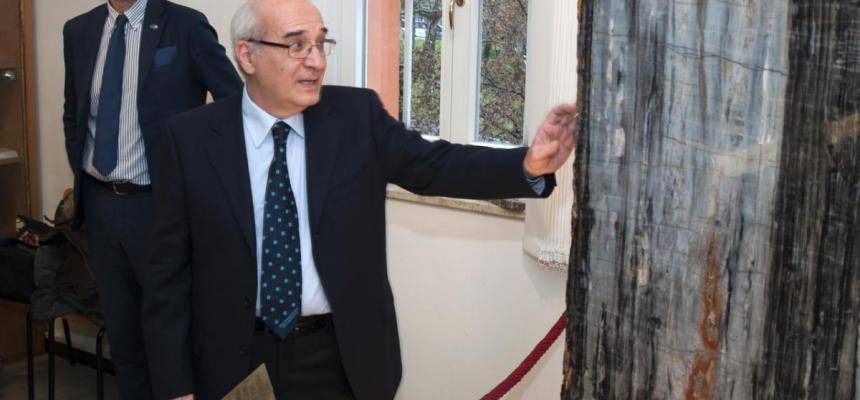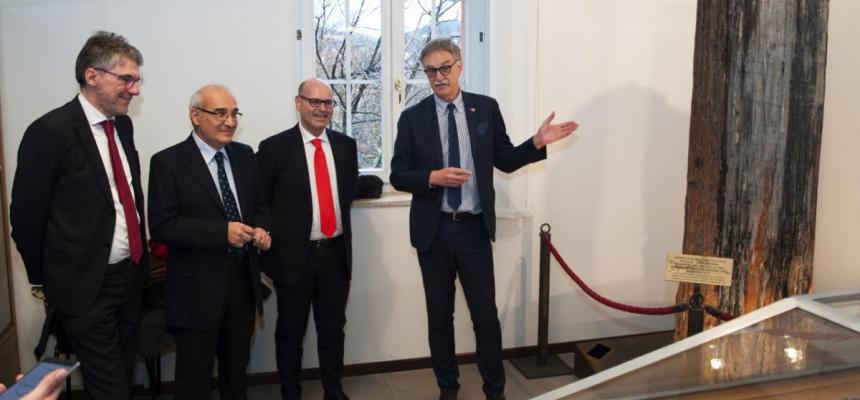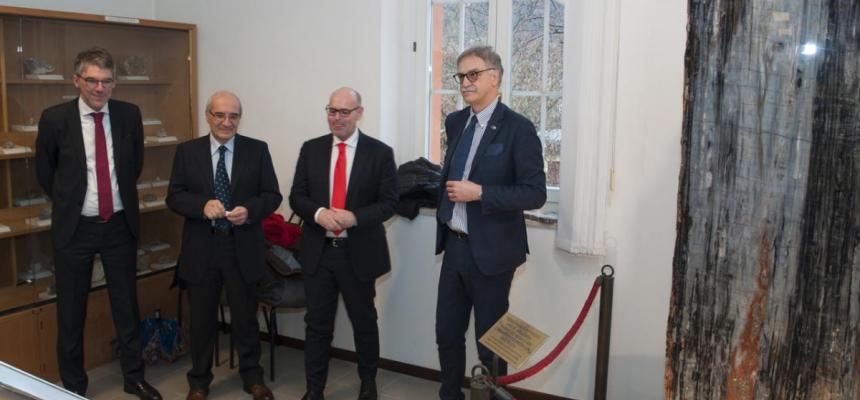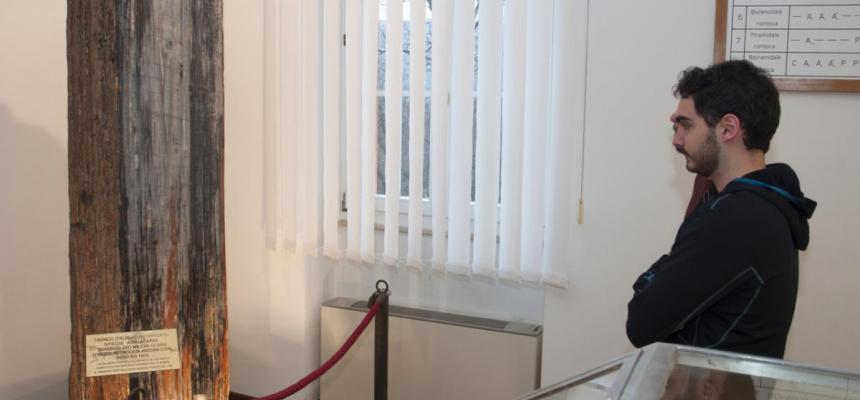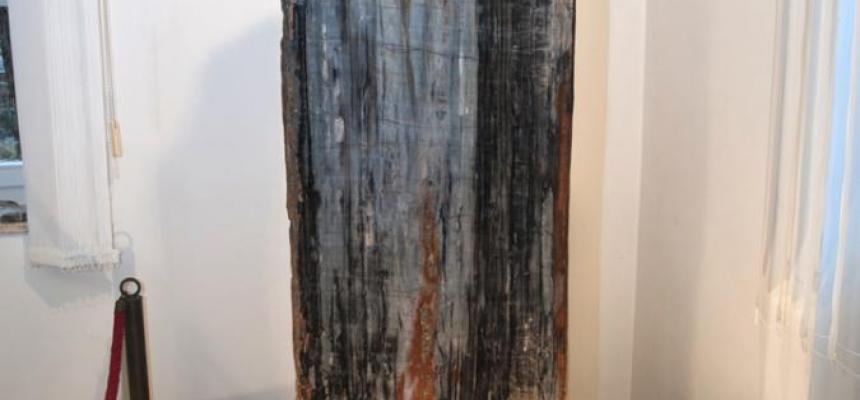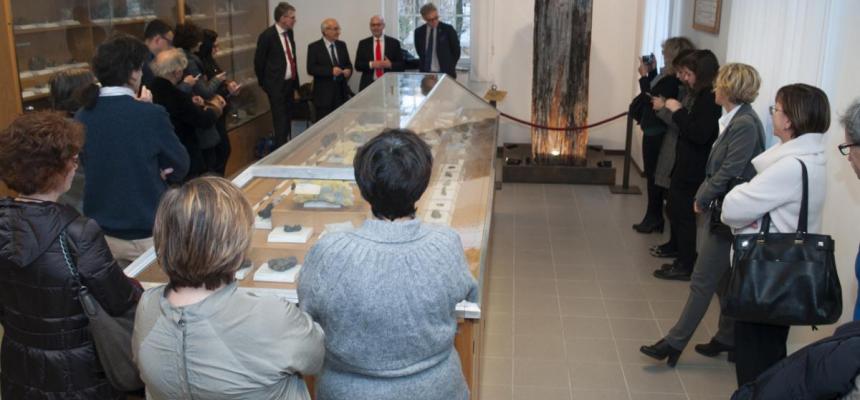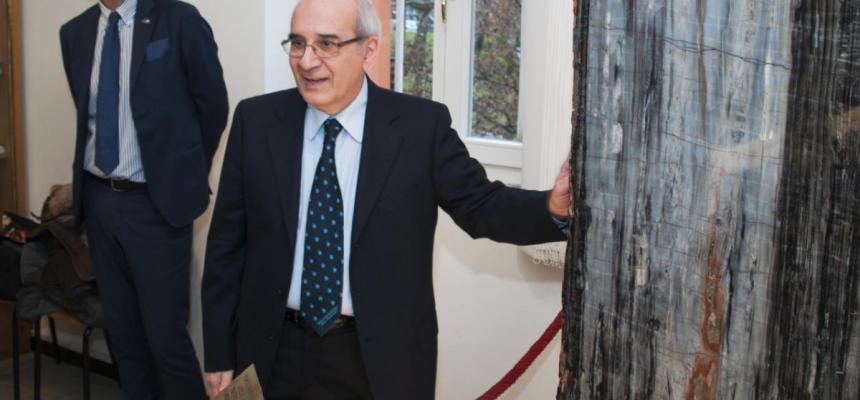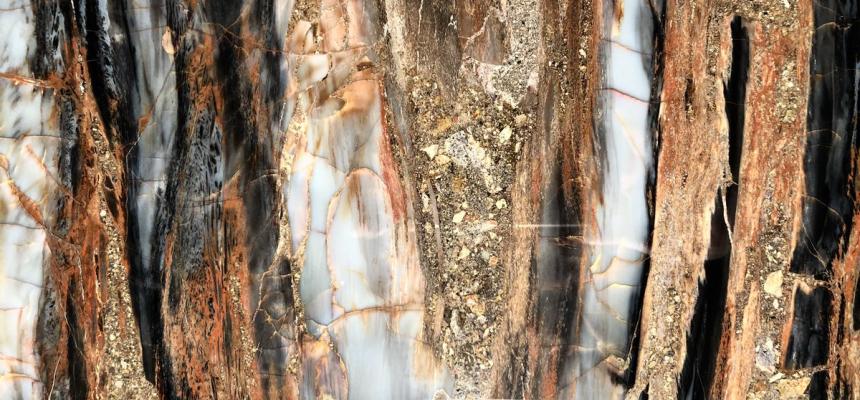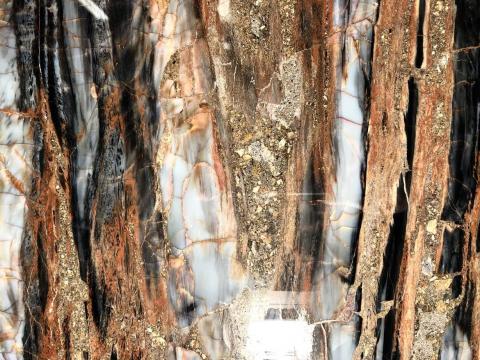The Museum of Mineralogy and Petrography of the University of Trieste expands its exhibition collection thanks to UniCredit: the Bank transfers to the University Museum a fossil trunk dating back to the Triassic period (220 million years ago).
On last January 18, an exceptional exhibit was presented at the Museum of Mineralogy and Petrography, made available on loan to the University by UniCredit with the dual purpose of expanding the already varied exhibition offerings of the Museum and make available to researchers of the University of Julian a unique find, of inestimable scientific value.
It is a fossilized trunk of "Araucaria" 220 million years old, dating back to the Triassic period, from the petrified forest of Arizona (USA), about 2 meters in size and weighing 1015 kg. The fossil trunk, originally located at the former headquarters of Via Cassa di Risparmio di Trieste, had been cut and polished on the surface of the cut in order to highlight the inner part with the magnificent colors formed in the process of fossilization and silicification, leaving unchanged the outer part that shows the bark. The other half of the trunk is exhibited at the entrance to the Museum of Natural History and Mineralogy in Moscow, the Vernadsky State Geological Museum. The trunk, together with other wonderful polished slabs made from other trunks, had been imported by Commendator Primo Rovis and subsequently marketed.
The formation of these wonders of nature is due to the covering of entire forests by volcanic ash from large eruptions or by fine sediments mainly clay. In this way the trunks are completely covered and preserved from decay. Afterwards, the water, whether rain or not, transports the silica deriving from the leaching of volcanic ash or clayey sediments, depositing it inside the trunks in the form of amorphous silica, replacing and forming in this way a perfect cast of the pre-existing structures. The presence of other elements such as iron, manganese, copper, cobalt in the water, gives the colors that we see in these trunks, which otherwise would have whitish colors. Finally, due to tectonic movements and the phenomenon of erosion, the trunks are brought to light. It is in this way that numerous petrified forests have been formed and preserved in various parts of the world, including Arizona. In Italy we also have examples of this type, although geologically more recent, in Sardinia and Puglia.
The Rector, Prof. Maurizio Fermeglia, on this important acquisition of the University, stressed: "I think it is a result of particular importance for the University of Trieste, having been able to receive from UniCredit Bank this important testimony of the geological past of the planet. The fossil trunk, millions of years ago, today finds its most suitable and best place in our Museum of Mineralogy and Petrography located in the district of San Giovanni in Trieste. I would like to thank all those who have made this significant operation possible, in particular the owner of the fossil Unicredit SpA, its managers, the Director of the Department of Mathematics and Geosciences Prof. Francesco Princivalle, and the university managers who have taken care of and successfully completed the procedure. This is a very special and very congenial enrichment for Trieste, the city of science.
Renzo Chervatin, Head of Development of North-East Territories at UniCredit, underlines: "The decision to enhance this rare fossil find by exhibiting it at the Museum of Mineralogy and Petrography in Trieste was for UniCredit a logical and natural consequence of our policy of attention to these territories. In fact, we believe that our choice can make a contribution both in terms of attractiveness on the part of the Museum and as a contribution to the development of research at an institution, the University of Trieste, of absolute prestige and credibility in the scientific community".
The trunk is now exhibited in the room of the mineralogical systematics of the Museum of Mineralogy and Petrography located in the Campus of San Giovanni, Palazzina O in E. Weiss 6 street, Trieste.



